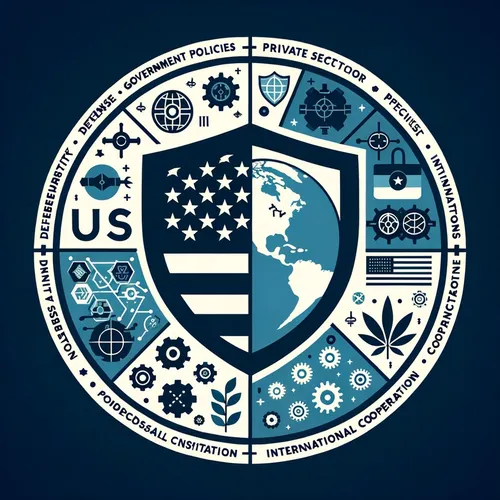Silicon Surveillance: US Chips Secretly Spy on China's Tech Giants!
- Author
- Quiet. Please
- Published
- Wed 13 Aug 2025
- Episode Link
- https://www.spreaker.com/episode/silicon-surveillance-us-chips-secretly-spy-on-china-s-tech-giants--67359472
This is your US-China CyberPulse: Defense Updates podcast.
US-China CyberPulse listeners, Ting here—the friendly cyber oracle who lives on espresso, firewalls, and cross-Pacific headlines. Buckle up, because the last few days in US-China cyber defense have been as wild as a Shanghai subway at rush hour and twice as complicated.
First up, if you’ve wondered why Nvidia and AMD’s chips are trending, it’s not just spillover from the AI craze—Washington’s tracking systems secretly embedded in semiconductors have stirred an absolute hornet’s nest in Beijing, as discussed by analysts over at Cryptonomist. The aim? To prevent advanced American microchip tech from making its way into Chinese defense and AI projects. The chips literally rat out their own location and usage, transforming tech trade into a digital spy game. Beijing didn’t exactly send a polite thank you card. Instead, they ramped up homegrown chip initiatives, told their tech giants to avoid the latest US processors, and demanded Nvidia prove those chips don’t come with hidden backdoors—a classic trust-but-verify stance, if trust ever existed in this rivalry.
Now, the US government hasn’t just relied on covert chip surveillance—export controls are back with a vengeance. According to CSIS analysts, Washington’s tightening on chip supply is all about denying China the raw horsepower it needs to leap ahead in AI, quantum, and military electronics. For companies like Apple and Tesla, who love China’s manufacturing magic, it’s a dance on cracked ice: keep the assembly lines humming but guard every last byte of IP like it’s the nuclear codes.
Let’s talk policy for a sec—and yes, I promise it’s juicier than it sounds. Two heavyweight agencies, America’s National Institute of Standards and Technology and China’s often-noted TC260, are playing a hesitant match of regulatory tennis, sharing AI safety and cyber standards while keeping an eye on global model risks. China’s latest risk framework, rolled out at the World AI Conference last month, is strikingly similar to US perspectives—both warn of autonomous AI self-replication and large-scale digital manipulation. Somebody, somewhere, is reading the same dystopian playbook.
Behind closed doors, private sector initiatives are quietly getting real. The Commodity Futures Trading Commission’s Kristin Johnson has been calling out insider threats and terrifying supply chain breaches, urging banks and exchanges to step up third-party risk mitigation. The financial world is finally waking up to the idea that a single breach could domino across continents just as fast as capital flows.
But, we’re not just patching code and hosting roundtable chats. This week, the US led at the UN’s Open-Ended Working Group, condemning China’s pre-positioning on American critical infrastructure. China’s rapid espionage, IP theft, and operational hackery—think power grids, water plants, the whole Target shopping spree of cyber targets—are now part of global rule-making debates. Yet, amid all this thunder, both sides gingerly agreed on a new, permanent international forum to make cyber norms stick, emphasizing incident reporting hotlines straight out of Cold War playbooks. A hotline for hackers—tell me that’s not the 2025 version of a red phone.
That’s what’s pulsing between DC and Beijing—tracking chips, double-encrypted diplomacy, standards sharing that feels more like spy-vs-spy, and US banks stockpiling cyber defenses like they’re prepping for a digital hurricane.
Thanks for tuning in, cyber warriors! Don’t forget to smash that subscribe button for your weekly hit of cyber drama. This has been a Quiet Please production, for more check out quiet please dot ai.
For more http://www.quietplease.ai
Get the best deals https://amzn.to/3ODvOta
